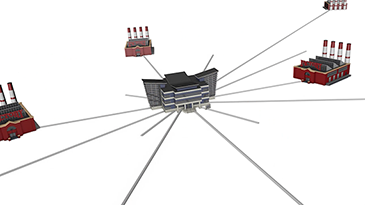I used the term “Industrial Narcissists” this month in an interview when referring to my experiences in the industry. Meaning no harm, of course, with that statement, I was merely referring to those who feel their production or maintenance issues are the biggest and most difficult problems to solve in their industry.
Those who have tackled their issues claim to have revolutionized how things are done and say they have advanced solutions matched by no other. The true back story is they were all working within their respective budgets to make magic happen using only what they could afford.
As “industry-agnostic” solution providers, we see varieties of problems across many verticals. Some are unique, and some are similar. Even knowing the solution in most cases, the biggest challenge across multiple verticals has to do with each vertical’s budgets and level of established infrastructure.
Reflecting back now, all of these problems look like “nails,” and we are holding an IIoT “hammer!” Moving forward, our approach will be much different because IIoT offers cost-effective ways to solve problems in all industries.
Take the Right Approach: Five Steps for IIoT Success
Unfortunately, there is still no magic bullet for industrial IoT to solve the more complex problems industries face. There are, however, ways to problem-solve that make IIoT attractive with the right approach.
Keeping these five actions in mind, you can take the problems that do exist and deconstruct them into smaller pieces with a goal of delivering exceptional time to value:
- Make IIoT connectivity a simple problem to solve. Connecting something is not solving the problem in most cases. It’s the necessary step to drive the business outcome. Making this step transactional in the overall process means faster time to value. The aim is to be agnostic and provide a wide spectrum of connectivity, allowing asset performance management apps to deliver value regardless of the infrastructure in place, including existing third-party historians. We do not want the initial step of connectivity to be a blocker.
- Keep the apps smaller and easy to deploy, and make the use cases more focused. Adoption of killer apps is really driven by how easy we make it to achieve value. By eliminating the monolithic approach to solving all problems with the “mega app,” I predict we will see an app’s adoption rate rise. It needs to be the next best thing in the industry that everyone talks about and can’t live without!
- Leverage the app melting pot. To solve larger problems, apps need to work together. If the use cases are focused to solve smaller problems faster, then we should be able to combine apps to solve larger problems with similar timelines. As the IIoT matures, we will see things like message brokers and protocols that allow easier integration of apps. At the moment, we see MQTT (Message Queuing Telemetry Transport) taking that spot as a universal way to share data in IIoT.
- Make IIoT apps self-service. I have a utopia view that IIoT vending will be a real thing — placing apps in various industrial cloud marketplaces and stores providing access to a broad audience globally. This, of course, depends on the first three points I made. It has to connect, be easy to deploy and potentially work seamlessly with other apps.
- Get end-user commitment faster. We need shorter trials with quicker wins and clearly defined success criteria. With this deconstructed IIoT approach, it’s not about proof of concept (POC) anymore. It has to be proof of value (POV). The IIoT is changing so rapidly that, in some cases, longer trials outlive the shelf life of the IIoT hardware and apps themselves!
Sometimes solving many smaller problems can lead to bigger end results. IIoT may not be a magic bullet, but every now and then we can get many birds with one stone!
To learn how AspenTech can kick-start your IIoT initiative, check out the Aspen Connect family of solutions.






Leave A Comment